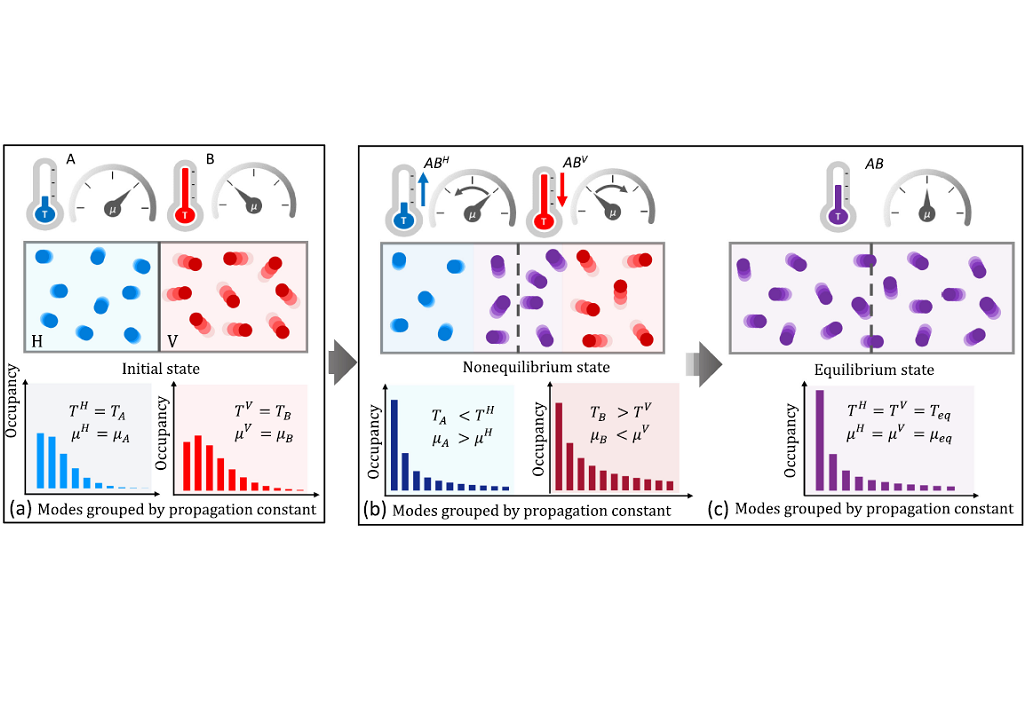
Recent studies have shown that light propagating in a nonlinear, highly multimode system can
thermalize in a manner totally analogous to that encountered in traditional statistical mechanics. At thermal
equilibrium, the system’s entropy is at a maximum, in full accord with the second law of thermodynamics.
In such arrangements, the entropy is extremized once the statistical power allocation among modes
associated with this photon gas attains a Rayleigh-Jeans distribution that is fully characterized by an optical
temperature T and a chemical potential μ. However, it has been theoretically argued that the variables T and
μ represent actual thermodynamic forces that control the exchange of the respective conjugate quantities
between two subsystems. In this work, we report, for the first time, optical calorimetric measurements in
nonlinear multimode fibers, which unambiguously demonstrate that both the temperature T and the
chemical potential μ dictate the flow of their associated extensive quantities, i.e., the energy and the optical
power. Specifically, we study the process of light thermalization associated with two orthogonally polarized
laser beams. Our observations are enabled by recently developed techniques that allow one to judiciously
multiplex/demultiplex the optical power within various mode groups. Our results indicate that because of
photon-photon collisions, “heat” only flows from a hot to a cold photon gas subsystem—thus providing an
unequivocal demonstration of the second law in such all-optical thermodynamic arrangements. In addition
to being fundamental, our findings provide a new approach to manipulate laser beams using thermodynamic
principles.
